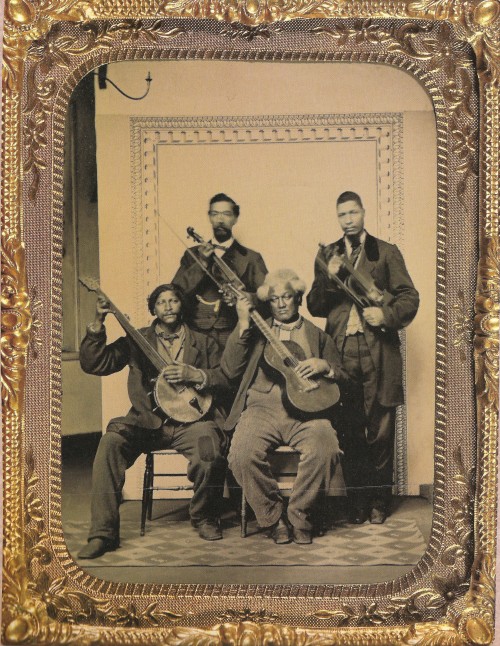
Location: Historic American Sheet Music Collection, Duke University, Durham, North Carolina
Title of Song: Plantation Galop
Composer: Coote, Charles
Lithographer: Sinclair, T.
Publisher: Lee & Walker
Year & Place: Between 1856 and 1867, Philadelphia, Pennsylvania
Collection/Call Number/Copies: Music #880; 1-2
Historic American Sheet Music Item #: n0880
Basic Description
Three figures dance in a moonlit grove. One taps a tambourine with his head thrown back. He pays no mind to the man and woman flirting around him. The woman turns away from the other man’s leering advances, yet thrusts her hip out, happily fueling his attention. The movements of the men are loose, lanky, and uninhibited. All three figures are narcotized by something, whether it be music and dance, sexual desire, or the possession of sexual power. Color enhances this narcotic ambiance. A psychedelic coral haze fades into pink and then blue, suspending the dancers in a perpetual sunset. Golden ferns frame them, making their space mysterious and tropical. The highly unnatural patches of bright moonlight on the figures suggest the presence of the supernatural.
Personal Description
Like the illustrations for “Plantation Dance; Burlesque” this lithograph reinforces the myth that slaves on southern plantations easily forget daily their struggles in music and dance. With wild, unnatural colors and uncanny flashes of moonlight, this illustration depicts the transformation from day to night, into an ecstatic catharsis. Once again, the plantation becomes a fantastic, pastoral space for the exceptional black body; exceptional in its capacity for transformation, escapism, and transcendence. Even the Victorian cotton tufts framing the name of the composer at the bottom lend to the mystique.
Reality Check

Chamber Orchestra, January 16, 1865 (from the Jackie Napolean Wilson Collection)
This quarter-plate tintype has three dated stamps on it reflecting payment of a tax that helped finance the Union side of the Civil War. This band is playing a five-string banjo, two violins, and a classical guitar. These are probably traveling musicians who would perform for audiences in private homes and theaters. African American composers may have been rare during the antebellum period in the U.S., but Francis Johnson (1792-1844) was quite successful under the circumstances. Born in Martinique, Johnson emigrated to Philadelphia around 1809. He played the Kent bugle and the violin, and wrote more than two hundred compositions of various styles, including opera music, patriotic marches, ballads, cotillions, quadrilles, and quicksteps. Johnson was one of the first African American composers to have his works published as sheet music. He was also the first African American to give public concerts and the first to participate in racially integrated concerts in the United States. He led the first American musical ensemble to present concerts abroad and introduced the promenade concert style to America.
(Source: Hidden Witness: African American Images from the Dawn of Photography to the Civil War, Jackie Napolean Wilson, St. Martin’s Press, New York, 1999; and the University of Pennsylvania Department of Special Collections)
